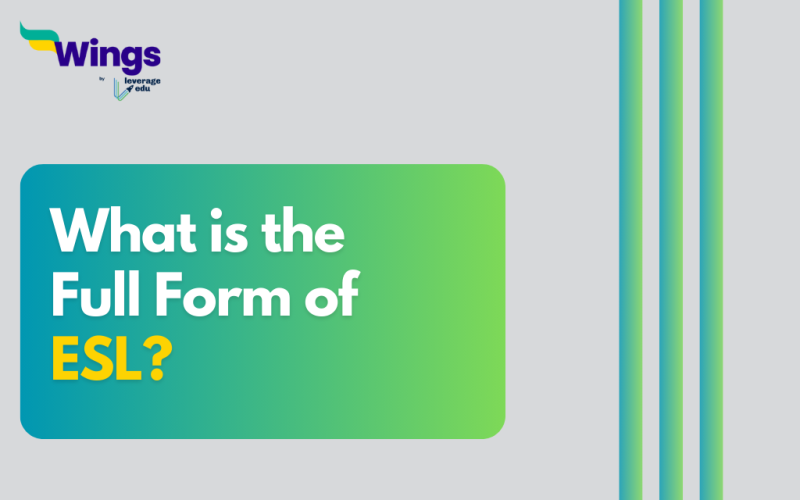The Full Form of ESL is English as a Second Language. ESL means the teaching and learning of the English language by people who speak a different native language. Moreover, ESL programs are designed to help non-native speakers improve their English language skills which include speaking, listening, reading, and writing.
Also Read: What is the Full Form of EG?
What is the Use of ESL?
Table of Contents [show]
Additionally, ESL has an important role in facilitating effective communication for people who do not have English as their first language. The Use of ESL is as follows:
- The primary purpose of ESL is to empower non-native speakers to navigate different aspects of life, such as education, employment, and social interactions.
- In educational settings, ESL programs assist students in integrating into English-speaking classrooms hence making sure that language barriers do not hinder their academic progress.
- In the professional realm, ESL proficiency is often a requirement for many jobs, and people seeking employment opportunities in English-speaking countries benefit significantly from ESL training.
- Furthermore, ESL is instrumental in promoting cultural exchange and understanding.
- Through learning English, people from diverse linguistic backgrounds can connect with people from different cultures, thereby encouraging global communication and collaboration.
Also Read: What is the Full Form of UET?
What is the Role of the ESL Teacher?
Consequently, a person can complete an Online ESL Certification Program and become an ESL Teacher. The Role of the ESL Teacher is:
- The ESL teacher facilitates language acquisition and cultural integration for non-native English speakers.
- Additionally, ESL teachers assess the language proficiency levels of their students and tailor instructional strategies to meet their specific needs.
- They design lessons that focus on grammar, vocabulary, pronunciation, and language fluency.
- Moreover, ESL teachers often incorporate cultural components into their lessons to provide a holistic understanding of the language.
- Furthermore, ESL teachers create a supportive and inclusive learning environment that encourages students to practice and apply their language skills confidently.
- They employ diverse teaching methods which include interactive activities, language games, and real-life simulations to improve the learning experience.
Popular Full Forms
We hope this blog has helped you understand the full forms of ESL and everything related to it. If you want to know more, find the 300+ full forms list on our blog. In the world of short forms, you can rely on the Leverage edu page to know about more full forms like this! Connect with us study abroad experts to achieve your international dream today!
 One app for all your study abroad needs
One app for all your study abroad needs















 45,000+ students trusted us with their dreams. Take the first step today!
45,000+ students trusted us with their dreams. Take the first step today!
